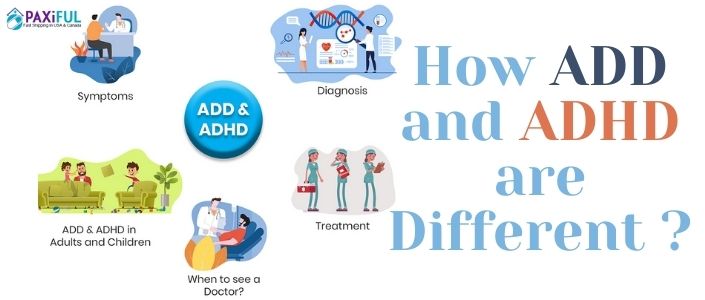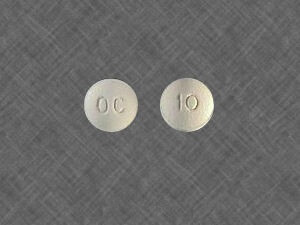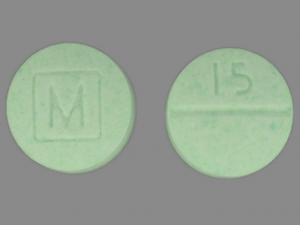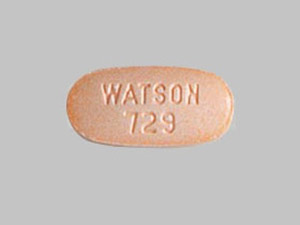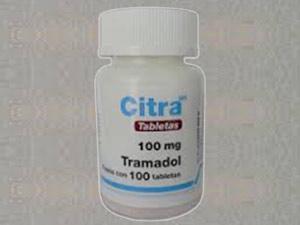What is the difference between ADD and ADHD in adults?
Attention deficit hyperactivity disorder: A significant challenge
Have you ever thought about the reason behind distraction among children when doing an important task such as homework or talking to them? Have you ever felt the sense behind complaints from teachers about your child daydreaming? Most of the time, the symptoms go unnoticed, and we do not pay much attention. But we need to understand these symptoms and take steps to cure them before they become incurable, as diseases do not come with an age tag.
The leading cause behind all these symptoms is ADHD (Attention deficit hyperactivity disorder). Let us first understand this disorder, its significant symptoms, and its cure. ADHD stands for attention deficit hyperactivity disorder, a condition with symptoms such as inattentiveness, impulsivity, and hyperactivity. These symptoms defer from person to person. ADHD was formerly called ADD attention deficit disorder.
There has been confusion between ADHD(Attention deficit hyperactivity disorder) and ADD(Attention deficit disorder). In 1994, doctors decided all forms of attention deficit disorder would be called “attention-deficit/hyperactivity disorder” or ADHD even if a person is not serious. ADHD begins in childhood and can persist to adulthood. It affects the individual work; their self-esteem is low. In some cases, ADHD is not diagnosed until an adult.
Diagnosis of ADHD in adults can be difficult because specific symptoms are similar to other conditions such as mood swings, anxiety, etc. Adults with ADHD also have mental health disorders such as depression and anxiety. If the symptoms lasted for long, it is advised to go to see a doctor whether you have ADHD or not. ADHD can hamper your work and make life difficult for you.
ADHD has been linked to poor work performance, unemployment, financial problems, family problems, increased alcohol and drug intake, poor self-image, troubled relationships. People start thinking negatively and sometimes want to end their life. Many adults with ADHD aren’t aware they have the disorder. Adults with the diseases may focus and prioritise, leading to missed deadlines and forgotten meetings and social plans.
Adult ADHD symptoms include disorganisation and problem prioritising, poor time management skills, excessive activity and restlessness, low frustration tolerance, frequent mood swings, hot temper, trouble coping with stress. Some of the signs to look at are whether one is suffering from the disorder may be like staying inattentive. Not paying attention to work or the task assigned and constantly daydreaming are often reported. Impulsivity, deciding on the spur of the moment without thinking about its effect in the long term. Hyperactivity- It involves fidgeting, tapping, talking, and constantly moving even in a situation where it’s not appropriate.
- ADHD predominantly inattentive presentation( used to be called ADD): symptoms are not severe that is why most of the time it gets ignored.
- ADHD predominantly hyperactive-impulsive presentation: Symptoms are severe enough that they cannot be ignored
- ADHD combined production ( include both inattentive and hyperactive impulse symptoms): It is the combination of both inattentive and hyperactive.
We have been discussing the symptoms and signs of the disorder. Now let us discuss the treatment of ADHD disorder.
Ways to treat Attention Deficit Hyperactivity Disorder
Nowadays, management of ADHD is done by counselling and medications. It helps effectively get relief in several severe symptoms of ADHD. Behavioural therapy is proved effective in treating ADHD symptoms. Psychoeducational training is given at early age for adequate healing of ADHD.
Stimulant drugs are mainly used as oral medications. Doctors may suggest ametaphine medications for long term relief in ADHD symptoms. Some none stimulant medications like bupropion, clonidine are also advised because of their job addictive property.
Do not take medicine in higher quantity than prescribed. It can be hazardous. Other natural ways could also be adopted. Maintain a regular exercise schedule. It would help if you practised yoga or meditation.
Take a balanced diet. It will give you stamina. Avoid alcohol as much as possible. Carry a notebook to note down things to remember. This will boost your confidence.
Communicate with friends or family about your therapy. It will enhance your social and behavioural skills. Practise your hobbies and make yourself busy. Set targets for the day and practise management skills.
You may sit and relax in one place. Try to pay attention to a single task at a point in time. Avoid listening to loud music if it makes you feel uncomfortable.
Learn to say no to the things bothering you. If anything distracts you from paying attention to your task at a point in time, avoid it. Teach your brain the importance of self-control. Try to manage your emotions for your well being.
Follow your doctor’s instructions carefully. Make a routine diary of every task of the day and check yourself evolving. It will improve your thinking ability.
Tags: ADD, ADHD, Attention deficit disorder, Attention deficit hyperactivity disorder, difference between ADD and ADHD, Symptoms

